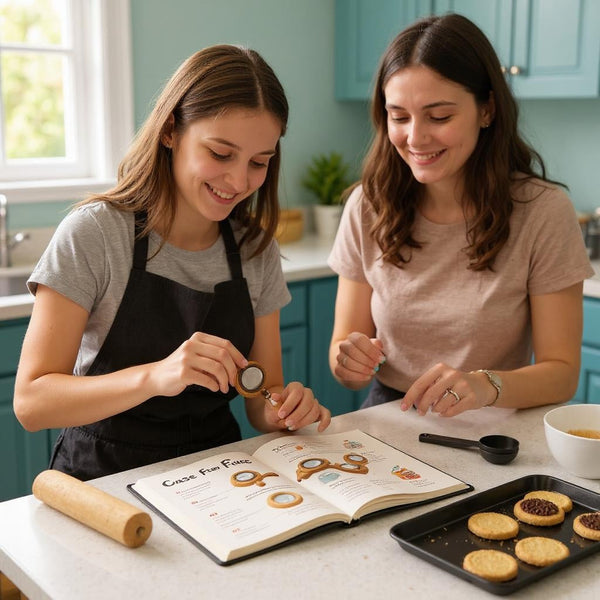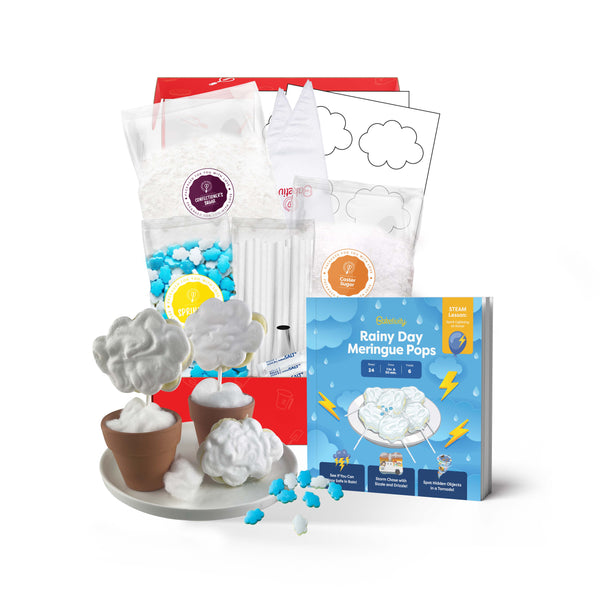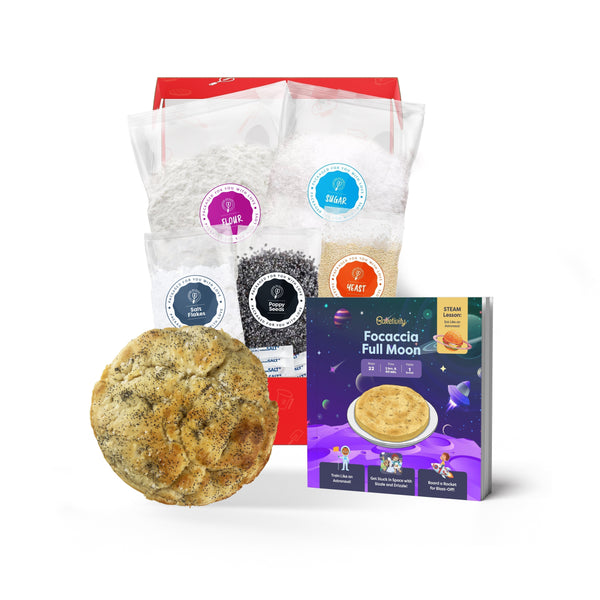Understanding the Basics of Homeschooling
Before diving into the specifics of 1st grade homeschool curriculums, it's important to understand the basics of homeschooling. Homeschooling offers flexibility and allows you to create a structured learning environment tailored to your child's individual needs and interests. It provides ample opportunities for one-on-one instruction and fosters a closer parent-child bond.The Importance of a Structured Curriculum
One of the key advantages of homeschooling is the ability to provide a structured curriculum. A structured curriculum ensures that your child receives a well-rounded education and covers all the essential subjects at an appropriate pace. It lays the foundation for future academic success and instills discipline and organization in your child's learning journey. Structure also helps you stay on track and meet the necessary educational requirements.Tailoring Education to Your Child's Needs
Every child learns differently, and homeschooling allows you to tailor their education to their specific needs. You can customize the curriculum based on their strengths, weaknesses, and learning style. If your child is an auditory learner, you can incorporate audio materials into their lessons. If they are visual learners, you can utilize visual aids and interactive resources. By adapting the curriculum to suit your child's learning preferences, you can enhance their understanding and retention of the material. Moreover, homeschooling provides the opportunity for personalized attention and individualized instruction. In a traditional classroom setting, teachers often have to divide their attention among multiple students, making it challenging to address each child's unique learning needs. However, when homeschooling, you can focus solely on your child, providing them with the undivided attention they deserve. This personalized approach allows you to identify and address any learning gaps or areas where your child may need additional support. Another advantage of homeschooling is the flexibility it offers in terms of scheduling. Traditional schools follow a rigid schedule, with fixed start and end times. In contrast, homeschooling allows you to design a schedule that works best for your family. Whether your child is a morning person or a night owl, you can adjust their learning hours accordingly. This flexibility enables your child to learn at their optimal time, enhancing their overall productivity and engagement in the learning process.Exploring Different Types of Homeschool Curriculums
When it comes to choosing a curriculum for your 1st grader, there are various options to consider. Let's explore some of the most popular types of homeschool curriculums:Traditional Homeschool Curriculum
A traditional homeschool curriculum follows a structured approach similar to traditional school settings. It typically includes textbooks, workbooks, and teacher guides for each subject. This type of curriculum provides a comprehensive outline of what your child needs to learn and ensures they cover all the necessary topics for their grade level. With a traditional homeschool curriculum, you can expect a clear progression of lessons and assignments that build upon each other. This approach is ideal for parents who prefer a more structured and organized learning environment for their child. It provides a sense of familiarity and consistency, mirroring the traditional classroom experience.Online Homeschool Curriculum
An online homeschool curriculum utilizes digital resources and interactive learning platforms. It offers a wide range of multimedia materials, such as videos, quizzes, and games, to engage students. Online curriculums often provide immediate feedback, tracking progress and allowing parents to monitor their child's performance. This type of curriculum offers flexibility and convenience, as it can be accessed anytime, anywhere with an internet connection. One of the key advantages of an online homeschool curriculum is the ability to tailor the learning experience to your child's individual needs. With a vast array of resources available at your fingertips, you can customize the curriculum to match your child's interests and learning style. Additionally, online curriculums often incorporate interactive elements that make learning fun and engaging, fostering a love for learning in your child.Montessori Homeschool Curriculum
A Montessori homeschool curriculum follows the principles developed by Maria Montessori, emphasizing hands-on learning and self-paced exploration. It incorporates specialized Montessori materials and focuses on developing practical life skills, independence, and a love for learning. This curriculum encourages creativity, critical thinking, and problem-solving. With a Montessori homeschool curriculum, your child will have the opportunity to engage in hands-on activities that promote independent thinking and decision-making. The materials used in this curriculum are designed to stimulate curiosity and foster a deep understanding of concepts. Montessori education values the development of the whole child, nurturing their social, emotional, and cognitive growth.Key Subjects to Cover in 1st Grade Homeschooling
Regardless of the type of curriculum you choose, there are fundamental subjects that should be covered during 1st grade homeschooling. These subjects lay the foundation for future academic success and provide essential knowledge and skills. Let's take a closer look at these key subjects:Language Arts and Reading
Language arts and reading instruction in 1st grade focuses on developing reading fluency, phonics skills, comprehension, and vocabulary. It involves reading aloud, guided reading, independent reading, and engaging in various literacy activities. Language arts instruction also includes grammar, writing, and communication skills. Furthermore, in language arts, 1st graders will begin to explore the world of storytelling and creative writing. They will learn how to express their thoughts and ideas through writing, using proper sentence structure and punctuation. Reading comprehension will also be emphasized, with students learning to analyze and interpret texts, identify main ideas, and make connections between different pieces of literature.Mathematics
In 1st grade mathematics, students build a solid foundation in numbers, operations, and problem-solving. They learn basic addition and subtraction, place value, measurement, time, money, and basic geometry. Math instruction should be interactive, incorporating manipulatives, games, and real-life applications to enhance understanding. Moreover, as part of their math curriculum, 1st graders will also delve into the world of patterns and sequences. They will learn to recognize and create patterns using shapes, numbers, and objects. This early introduction to patterns lays the groundwork for understanding more complex mathematical concepts in the future, such as algebra and advanced geometry.Science and Social Studies
Science instruction in 1st grade involves exploring the natural world, conducting experiments, and learning about the scientific process. Topics may include plants, animals, weather, seasons, and basic physics. Social studies instruction introduces young learners to the world around them, teaching about community, geography, history, and cultural diversity. Additionally, in science, 1st graders will have the opportunity to engage in hands-on activities and experiments to deepen their understanding of scientific concepts. They will learn to make observations, ask questions, and draw conclusions based on evidence. Social studies will expand their horizons by introducing them to different cultures, traditions, and historical events, fostering a sense of curiosity and empathy towards others.Choosing the Right Curriculum for Your Child
When it comes to selecting a homeschool curriculum for your 1st grader, there are several important factors to consider. It's crucial to take into account your child's unique learning style, your own teaching style, and of course, your budget. By carefully evaluating these aspects, you can make an informed decision that will set your child up for success.Assessing Your Child's Learning Style
One of the first steps in choosing the right curriculum is to observe how your child learns best. Are they visual learners who thrive when presented with images and diagrams? Or perhaps they are auditory learners who absorb information through listening and discussing. On the other hand, kinesthetic learners may benefit from hands-on activities and movement. Understanding your child's learning style will help you select a curriculum that caters to their strengths and preferences, ensuring that they grasp the material effectively.Considering Your Teaching Style
Equally important is reflecting on your own teaching style and what works best for you and your child. Some parents prefer a curriculum that provides detailed instructions and a structured approach, known as a scripted curriculum. This type of curriculum can be particularly helpful for those who appreciate clear guidance and a step-by-step process. On the other hand, if you enjoy more flexibility and creativity in your lesson plans, you may opt for a curriculum that allows for customization and adaptation. By considering your comfort level with different teaching methods, you can choose a curriculum that aligns with your own preferences and teaching style.Balancing Cost and Quality
While it's important to consider your budget when selecting a curriculum, it's equally crucial to remember that investing in your child's education is invaluable. Researching various curriculum options, reading reviews, and comparing prices can help you find the best fit for your family. Keep an eye out for sales, discounts, or used curriculum options that can help you find quality materials within your budget. Remember, the cost of a curriculum should not be the sole determining factor; prioritize the quality of the content and the suitability for your child's needs. By understanding the basics of homeschooling, exploring different types of curriculums, covering key subjects, and considering your child's learning style and your teaching style, you can choose the best 1st grade homeschool curriculum. However, it's important to keep in mind that every child is unique, and what works for one may not work for another. Be open to adjustments and flexibility to ensure your child receives the quality education they deserve. With the right curriculum in place, your child can thrive and develop a lifelong love for learning. Remember, homeschooling offers a wonderful opportunity to tailor your child's education to their individual needs and interests. Embrace the journey and enjoy the process of discovering the perfect curriculum for your 1st grader!Enhance Your Homeschooling Experience with Baketivity
As you embark on the rewarding journey of homeschooling, consider incorporating Baketivity into your curriculum to enrich your child's learning experience. With our baking kits, you can blend education with hands-on fun, reinforcing key skills such as measuring, following instructions, and creativity. Our mission to foster family bonding aligns perfectly with your homeschooling goals, making Baketivity an ideal addition to your 1st grader's educational adventure. Join the Club today and start creating delicious memories while providing a holistic learning experience for your child.




